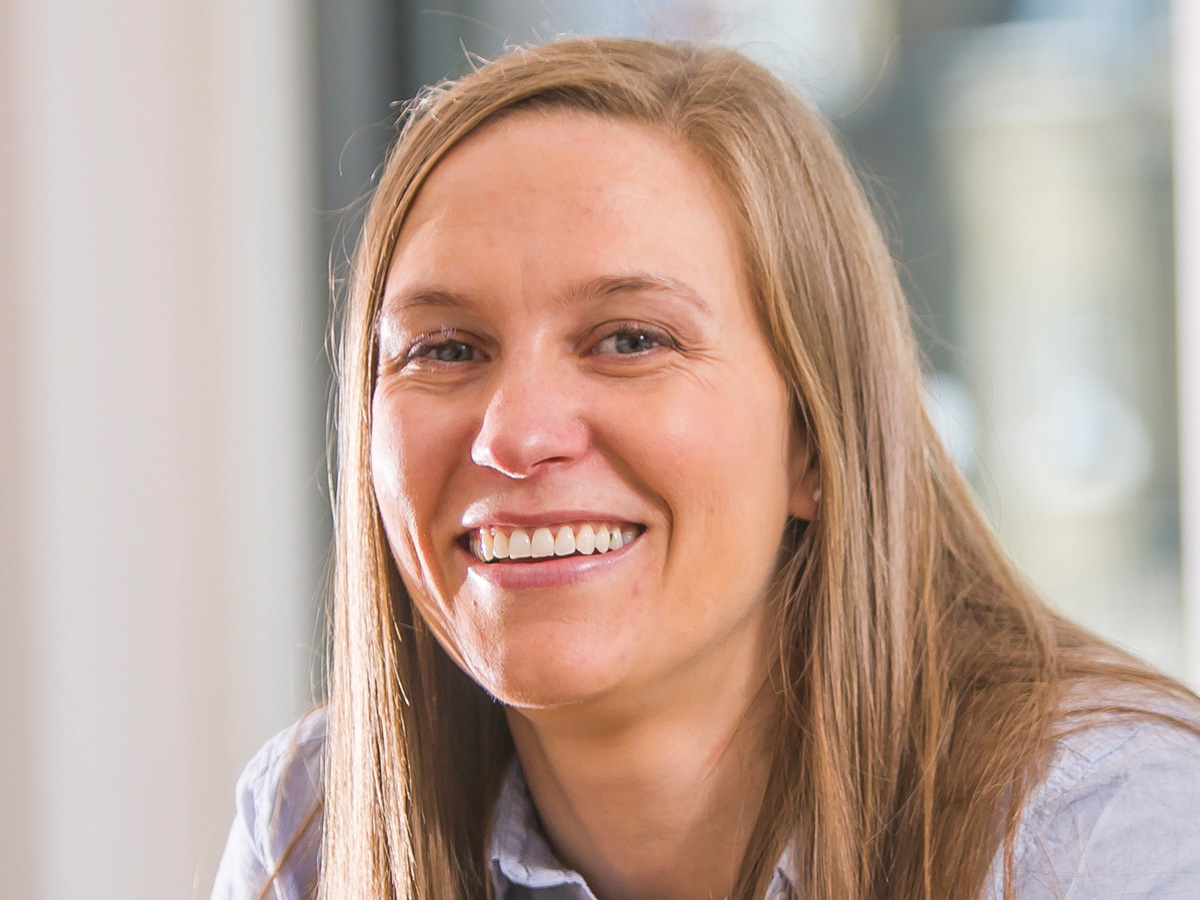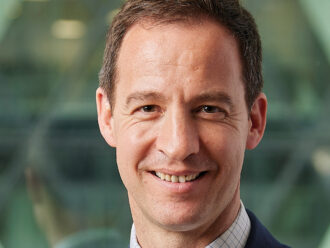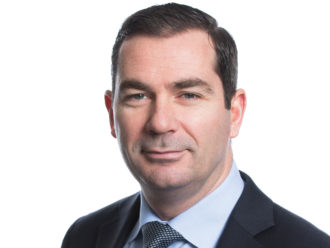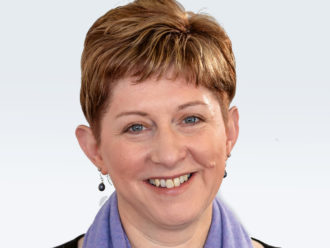Smart Pension’s head of sustainable investment, Rachel Neill, tells Mona Dohle about ESG and the default fund, outsourcing engagement, the problem with fees and why bonds are now an alternative.
‘The main challenge for master trusts at the moment is the fee structure.
Smart Pension currently offers its members the option to invest in the Smart Future Fund, an ESG-compliant fund made up of building blocks from LGIM’s Future World Fund range. Why does this fund mirror the current default fund’s allocation?
We want to give members the option to invest in line with their values but have the same geographical exposure as the default fund. We do not want them to feel like they had to choose something that was completely out of whack from the default option. Nor did we want them to pay more for it, so it is priced the same as the default fund.
Why are you planning to make the default fund ESG compliant?
ESG principles are applied across our entire fund offering and we are going to include ESG-specific funds into the default where more than 90% of our members are invested. That is part of a broader strategic asset allocation review which we have undertaken on our default fund and self-select options.
Our current default fund is arguably quite bland. It is 85% equities and 15% fixed income. The trustees and Smart’s investment managers undertook a review and by balancing risk and reward and ESG principles have endorsed a change to the asset allocation of our default to include asset classes like alternatives and, of course, the ESG-specific funds.
In the defined contribution (DC) world, the level of engagement with members is rather low and most are invested in the default fund despite research showing that the majority want their pension assets in green strategies. So is making the default fund ESG compliant a way of increasing the uptake for the ESG strategy?
Absolutely, but it is not the only reason. Engagement in DC is typically low but when members are made aware of the things their savings are invested in, we know that engagement increases. We recently held two member webinars where members could ask questions. We received quite a few interesting questions on what the default fund is invested in, our exposure to fossil fuels and so on.
There is anecdotal evidence that members care about ESG, albeit in a master trust with such a diverse member base, the views are going to vary widely. But you’re right, engagement with members is a big part of that.
Another big factor is trustees thinking about the financially material risks in our portfolio. It is about being sensible and saying: “Our job is to ensure that our members have good retirement outcomes.” ESG and sustainable investing are all about long-term thinking. In other words, ESG as a risk management tool was arguably a bigger factor in the decision-making as member engagement. If we are going to properly manage financial risk for the long term, then ESG criteria should be part of the investment decision making process in the default fund.
But you are right, the self-select ESG option had a limited uptake. To be fair, we did not go in with a big bang launch, it was very much a soft launch. That said, it did have a bigger uptake than I thought it would.
Will that require significant change?
Yes and no. The decision was part of a broader strategic review of our portfolio. The new asset allocation will be moving to 80% equities, 20% alternatives. The equity portion is where the ESG funds are going to be on offer, certainly when it launches. Maybe over time we could include other asset classes.
The equity portfolio will be invested in the Legal & General Future World fund range, which we are using on our platform. So, it is just saying: “Well, can we use a Future World Fund building block to give us the geographical exposure we need in the default?”
Where do bonds fit into your 80%/20% equity/alternatives split?
Bonds, or active fixed income more generally, are considered under our alternative asset class. The ESG component will be primarily on the equity side.
When it’s fully embedded, 71% of our default fund will be ESG integrated.
We are implementing it as a slow transition from our current default fund into the new default fund to keep transaction costs for members as low as possible. We did not want to do a bulk switch.
When it’s fully embedded, 71% of our default fund will be ESG integrated.
What’s the timeline for the transition?
Because of the transition approach we are taking, it could take six to 12 months. It will depend on inflows because we are not doing a straight up switch. We are doing it by adding new contributions and asset allocation. It could take a little bit longer, but we should have started the transition in early Q2 2019.
How does that transition work in practice?
With bonds you could just hold them until they mature but how do you transfer out of an equity index?
Because we invest passively, we effectively hold the index. In the UK fund, the benchmark is not the FTSE100 but an ESG compliant equivalent. So, it depends on how the benchmarks are set up.
How do passive investment funds apply ESG criteria whilst mirroring a benchmark?
We have a responsible investment policy that our trustees have signed off. Within that there are two key elements. One is that we have some exclusions. These include the ones that you are probably familiar with and would expect, e.g. violators of the UN Global Compact or companies that generate the most significant proportion of their revenue from coal, cluster ammunitions, that sort of thing.
The second part is around active ownership and engagement with companies. As the fund manager, Legal & General does the engagement with the companies. One good example is what happened with Shell last year. [Shell is one of the top 10 holdings in Smart Pension’s current default fund.] In December last year it agreed to tie executive pay to how successful it was in cutting carbon emissions. That was because institutional investors were saying: “We are holding your stock, but you are not doing enough to tackle climate change.” In terms of being able to integrate ESG criteria into passive funds, the push radius is on the engagement side as opposed to divestment. After all, if you divest, you simply sell to someone else who has to hold the investment, and you also lose your “vote” or influence.
Does the mandate with LGIM differ from the vanilla Future World fund on certain criteria?
It is very much in-line with the Future World fund range. Having said that, every master trust will have different requirements in what they are expecting from their managers in terms of reporting, the stewardship code, that sort of thing.
Our requirements for any fund house will always be independent from the asset manager. They are based on our own criteria and LGIM’s standards are in-line with that.
If you decided to divest from a sector, such as tobacco, for example, and the Future World fund had it in its standard portfolio, could you take it out?
I would imagine so, but we have not had that discussion. The Future World funds we are using at the moment are index trackers and because British American Tobacco is part of the FTSE100 it is part of the portfolio by default.
If the trustees decided to divest from tobacco, we would either find another fund manager who could accommodate that or work with LGIM to accommodate the trustee requirements.
But for the time being there is not a huge need to tailor the portfolio?
Absolutely. That may change, of course, when the alternatives allocation becomes more embedded. Along with the trustees, different calls may be made in which case discussions will need to be had.
How are you monitoring LGIM’s levels of engagement as it is the shareholder so you are not voting at AGMs?
LGIM has a corporate governance team which is independent from the fund management side of the business. So, if LGIM is invested in a company and there is an AGM coming up it will look at things like that company’s climate pledge and its environmental impact. That is irrespective of the performance of the company in the fund, which is important.
That is something we are keen to understand. We want to know where they voted and how they voted. Obviously, spending time with them when they do the Future World fund methodology, understanding how they approach ESG integration in passive funds, how transparent the underlying companies have been and how they go about enforcing that is crucial.
We now also have the legislation to back that up. So, master trusts must include ESG criteria in their Statement of Investment Principles. That came into force last October and by October 2020 schemes have to show how they have implemented those standards.
But the rules are different for DC funds, right?
Correct. You have to show how you have implemented your responsible investment policy and there will be further reporting requirements on trustees’ voting behaviour. In our case, we will have to demonstrate how often we have chased up LGIM and how often they have sent us reporting and monitoring. That means the onus is on us, not them to ensure we are being good stewards of member assets.
We had lots of deep dives with LGIM and sat with the quant teams and the corporate governance teams, but the proof will be in the pudding next year. It will be up to us to demonstrate that we are practising what we say we are doing.
Was it a big job getting your Statement of Investment Principles updated ahead of the October deadline?
We were lucky because our trustees saw ESG as financially material a lot sooner than they were forced to by the authorities. By the time the regulation had been signed into law in September, our existing policies would have been enough to comply with the regulations.
But it did give us pause to think about if what we were doing was enough? Can we be more intentional? Because of that we refreshed it. We were not in a rush because the structure was already in place.
We want to be leaders in this area so we had to think about what more could we do. How could we be more articulate? From a member’s perspective, how can we translate what we are trying to do into something that is a bit more digestible?
You invest almost all of your assets passively, but as DC assets grow do you foresee a time when you will be more active and invest in different asset classes?
The main challenge for master trusts at the moment is the fee structure. We have spoken to some great fund managers, with some exciting active strategies…and then the cost comes along and it just cripples us. Across the board we are seeing fees come down. If that trend continues then there is an opportunity for master trusts to enter the active space.
There might also be more engagement as you see with defined benefit (DB) schemes where they are talking directly to companies.
The caveat I would place on that with regards to ESG active strategies is that not all are created equally. It’s about lifting the hood and understanding what’s underneath.
If it’s too good to be true, then it probably is.
For DB schemes, alternative asset classes such as infrastructure are high on the agenda. Do you see a point when DC schemes will invest in these assets?
It might happen sooner than we think and the reason for that is twofold. One is that the government has shown a desire for pension schemes to invest in these assets. Successful examples include the development of Kings Cross, where pension funds played an active role. When we have discussions with government departments, we often get the question why they are not investing more in these assets.
From the discussions we have had there is a desire to take real assets more seriously.
From a trustees’ perspective, a lot of it is about things like the Woodford scandal. Liquidity is a big concern at the moment. The other issue is how to gain access to these assets. What is the investment vehicle that is being used and does there need to be some form of collectivisation, such as all master trusts working together and investing in Crossrail, for example?
These things are being worked through at the moment, but from the discussions we have had there is a desire to take real assets more seriously. DC investment in infrastructure will happen. Because of that push from the government hopefully gates will open.
A lot of it will depend on the scheme as well. Smart is a relatively new scheme, our demographic is relatively young, so we have pretty good liquidity but that might not be the case for every scheme.
The other side of it is that real actual returns are low. Every scheme is looking to get their target returns and maybe real assets will provide that. The obstacles we are facing at the moment could be removed and schemes can start looking at these assets and start including them even though they are illiquid.




